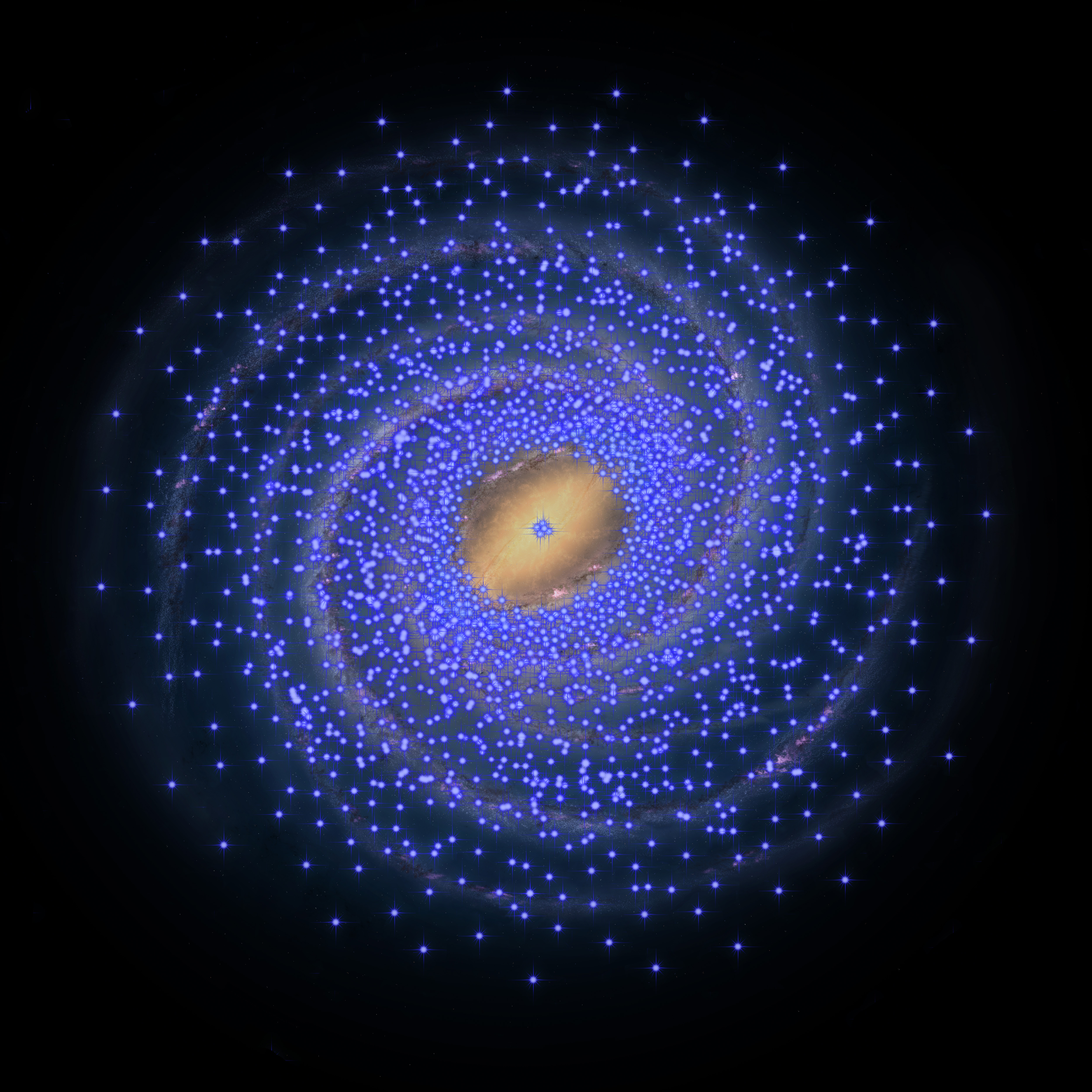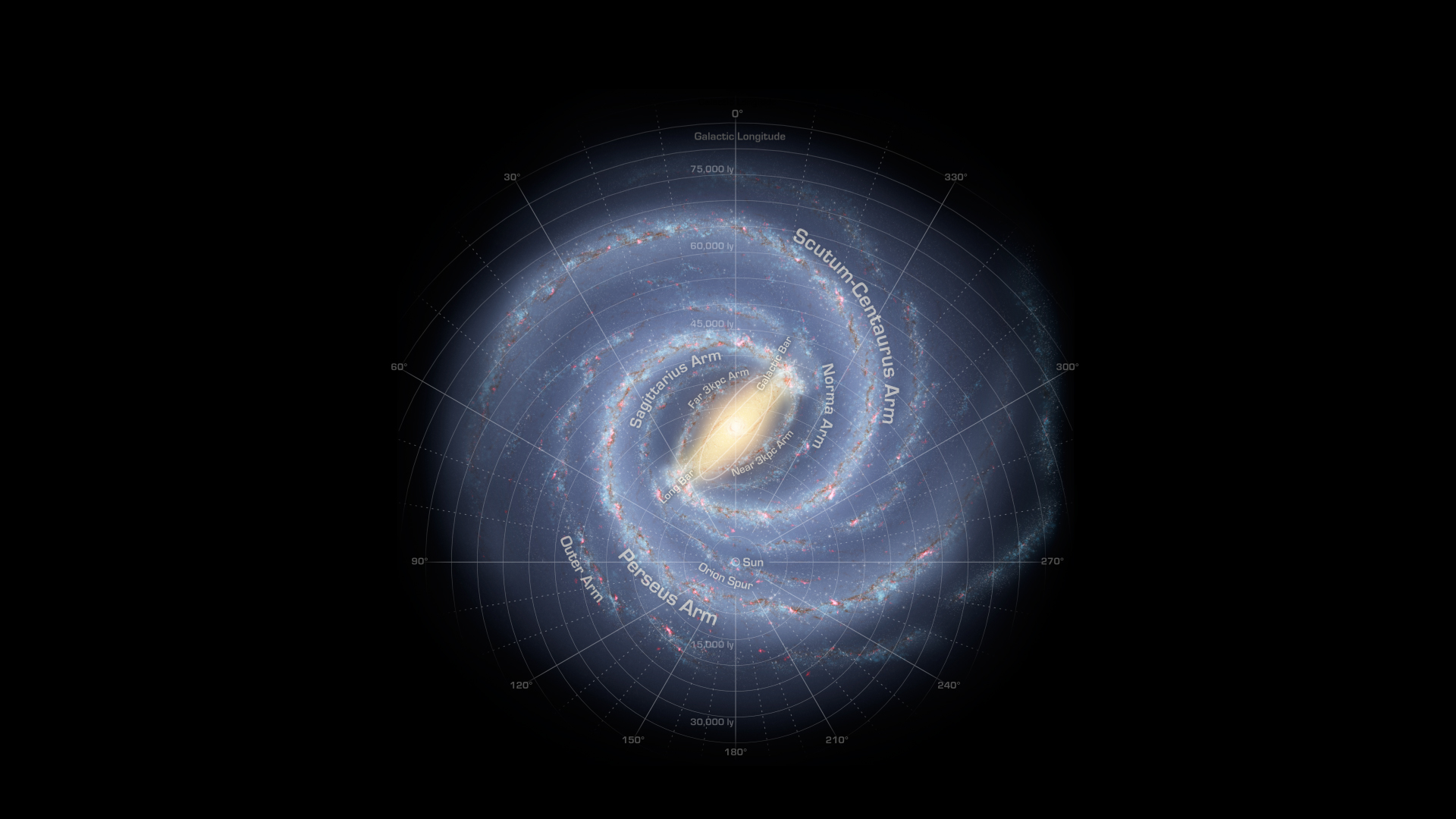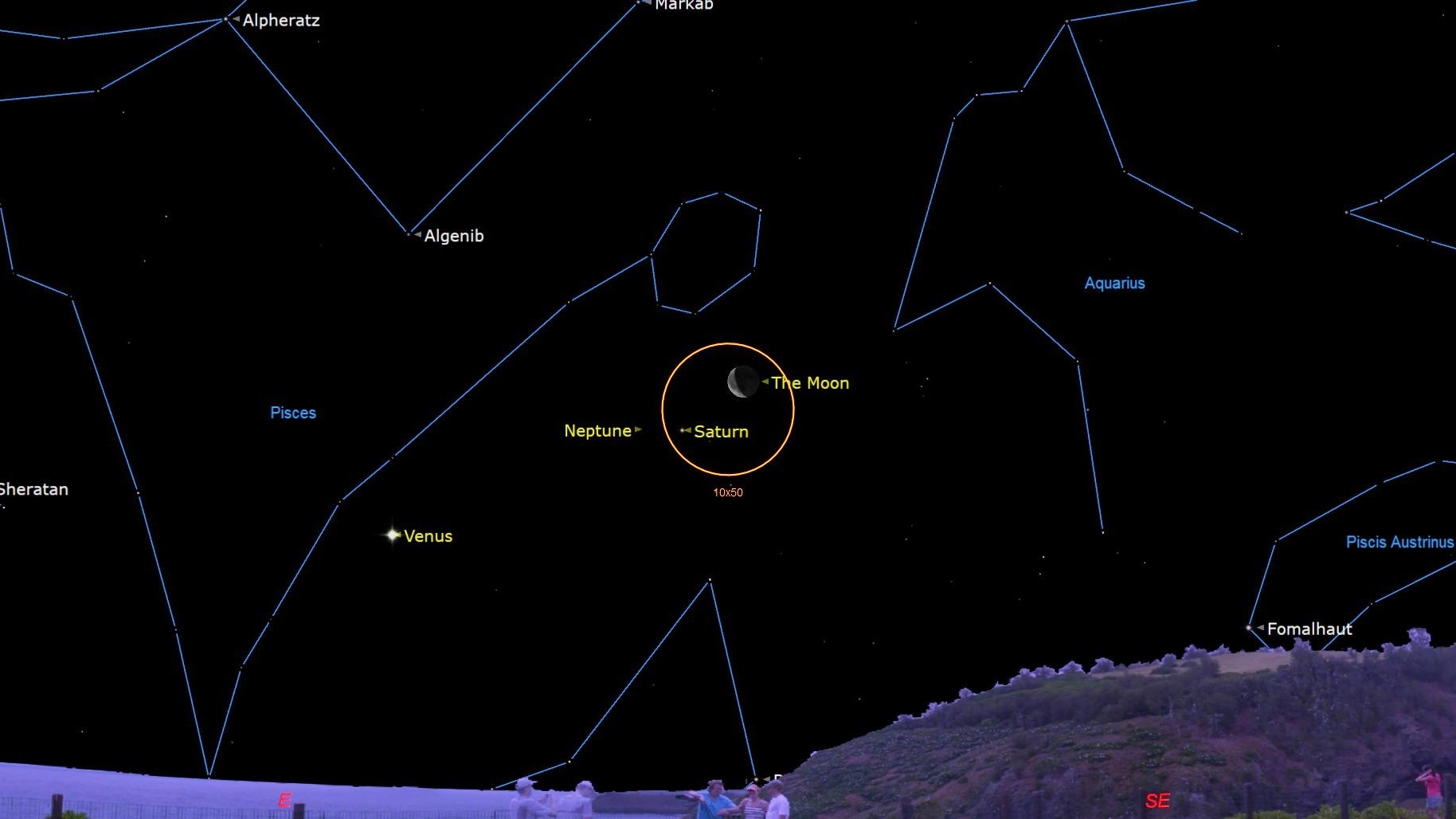Stellar Desert: Central Milky Way Lacks Young Stars

A vast tract of space near the center of the Milky Way — in an area called the inner disk — is completely devoid of young stars, new research shows.
The Milky Way, which hosts Earth's solar system, is a spiral galaxy containing billions and billions of stars. By measuring the distribution of these stars, astronomers can better understand how the Milky Way formed and developed over time.
Young stars called Cepheids are good growth markers because they regularly pulsate in brightness and the pulsations are tied to their overall luminosity. This means astronomers can monitor the duration of bright periods and estimate the stars' distance from Earth based on how bright they appear. But in the Milky Way's inner disk, which extends for 8,000 light-years from the galactic core, researchers haven't found any of those young stars, and that observation challenges current theories on Milky Way formation, officials said in a statement from the Royal Astronomical Society. [Our Milky Way Galaxy's Core Revealed (Photos)]
"The current results indicate that there has been no significant star formation in this large region over hundreds of millions years," Giuseppe Bono, co-author of the new research and astronomer at the Rome Observatory, said in the statement.
This lack of Cephids had not been seen before, because thick, light-blocking cosmic dust in the inner regions of the Milky Way block astronomers' view from Earth and make it difficult to spot the pulsating stars. But by using near-infrared data from a Japanese-South African telescope, the researchers were able to get a clearer view.
Previous studies found Cepheids in the heart of the Milky Way, said Noriyuki Matsunaga, lead author of the new work from the University of Tokyo. "Now, we find that outside this there is a huge Cepheid desert extending out to 8,000 light years from the center," he said in the statement.

With the Milky Way itself measuring about 100,000 light-years across, the researchers noted that this stellar desert comprises a lot of empty space.
Get the Space.com Newsletter
Breaking space news, the latest updates on rocket launches, skywatching events and more!
"Our conclusions are contrary to other recent work but in line with the work of radio astronomers who see no new stars being born in this desert," Michael Feast, co-author of the new research and astronomer from the South African Astronomical Observatory, said in the statement.
The new work was published June 27 in the Monthly Notices of the Royal Astronomical Society.
Follow Samantha Mathewson @Sam_Ashley13. Follow us @Spacedotcom, Facebook and Google+. Original article on Space.com.
Join our Space Forums to keep talking space on the latest missions, night sky and more! And if you have a news tip, correction or comment, let us know at: community@space.com.

Samantha Mathewson joined Space.com as an intern in the summer of 2016. She received a B.A. in Journalism and Environmental Science at the University of New Haven, in Connecticut. Previously, her work has been published in Nature World News. When not writing or reading about science, Samantha enjoys traveling to new places and taking photos! You can follow her on Twitter @Sam_Ashley13.
